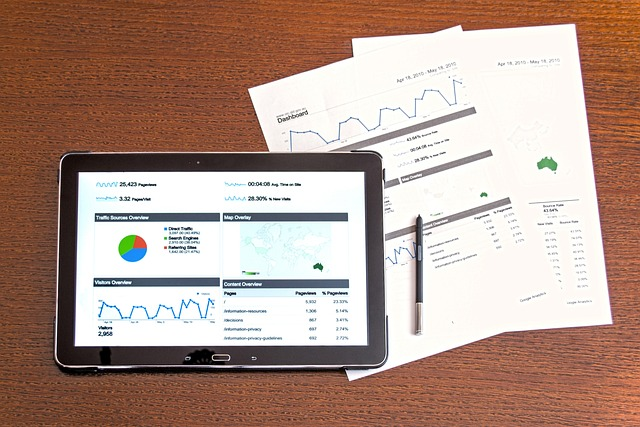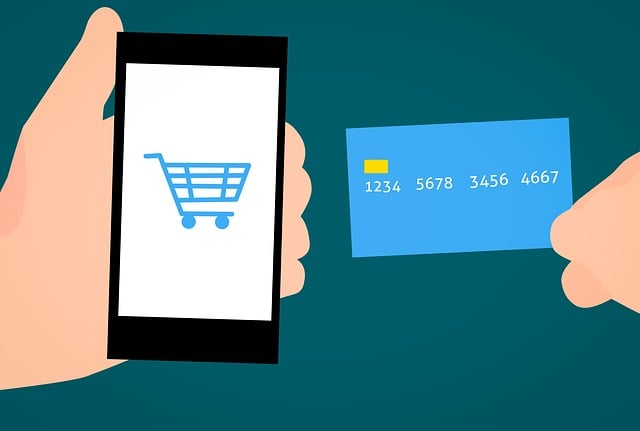
Calculate Your eCommerce Conversion Rate Formula Included!
Wondering how to calculate conversion rate for your eCommerce website?
Here is the basic conversion rate formula;
Your conversion rate is the number of conversions divided by the total number of visitors to your site. Then, multiplied by 100.
Conversion Rate Formula: Conversion rate = (conversion/total visitors) * 100
So, for example, let’s say your eCommerce site is getting 1,000 visitors in a month, and from that number, 50 total number of conversions (or sales). This means your conversion rate is 50 divided by 1,000 and then multiplied by 100. So, it’s 5%.
Generally speaking, the higher your average conversion rates – the better. Because you’re getting more bang for your buck per traffic.
Through a Conversion rate optimization audit, you could even bump up your conversion rates from 5% to 7% (as an example). This may not seem like a high increase, but you’d be getting on average 70 conversions instead of 50 per month from the same amount of traffic.
A higher conversion rate leads to exponential growth and can really increase your revenue for your eCommerce business or your general marketing funnel over time.
And the best part is you can launch a successful conversion rate optimization audit one time and reap the rewards of having higher conversion rates for years to come.
But we’re getting off track here.
If you’re wondering how to calculate your eCommerce conversion rate formula – it’s not as simple as just dividing your conversion rates by your visitors.
There are a few other conversion rate optimization audit concepts and strategies you need to know about so you know what you’re looking at within your data and how to boost your rate.
Conversion Rate Topics:
- How to Track and Calculate Your eCommerce Conversion Rates
- What Is a Good eCommerce Conversion Rate
- 3 Essential Tips to Increase Your eCommerce Conversion Rates (From Proven Conversion rate optimization Principles)
So, let’s take a look at some other ways you can increase the conversion rate measures for your eCommerce store, optimize your eCommerce checkout process and other concepts you need to know about.

How to Track and Calculate Your eCommerce Conversion Rate

Tracking your conversion rate allows you to measure the performance of your top web pages and apps.
For eCommerce, for example, it would be nice to know which of your pages are converting the most, where your visitors are going from your landing page, and what you can do to improve other product pages.
It goes without saying that knowing what works and what doesn’t is extremely important in any business. Ideally, it should be backed up by data and not guesswork or assuming a landing page converts just because it looks good.
You’ll also want to know what’s performing better when you make changes and what’s worse.
This is the basis of A/B testing.
Now, you know how to calculate the conversion rate – but how do you actually TRACK it or find that much-needed data?
Let’s take a look.
How to track your eCommerce conversion rate with Google Analytics
- Log into Analytics.
- Click the cog icon at the bottom left corner and go to your admin settings.
- On the right, click Goals, where you’ll configure a new goal to track.

4. For goal setup, you can use a custom one or follow a pre-made template.

5. Next, you’ll want to set up a goal description.
Give the goal a name and select the type of goal you want to track (examples above):
- The Destination goal – Measures every visit to an URL on your page.
- The Duration goal – How long visitors stay on your site per session.
- The pages or screens per visit – How many pages a person visits before leaving your site. Another measure of engagement.
- The Event goal – When a visitor performs a specific desired action that you set like watching a video, clicking a button, sharing a post, etc.

Next, click continue and go to the third step, which is the conversion goal details. This is your desired action.
With this setup, you pick a URL that indicates success or conversion.
For example, when a visitor arrives at a “thank you page” on your website, this means they’ve submitted their email (converted through an opt-in form). So, you can write /thanks.html as the URL of the page to track conversions.
Finally, once you’ve set up your conversion goals, here’s where you can find the conversion rate for your eCommerce store in Analytics:
- Click Conversions>Goals>Overview.
- Here, you’ll see the conversion rate for your different goals.
- The page defaults to the average conversion of all goals. So, if you have more than one goal, you can choose to see that specific conversion rate, depending on the goal.
You can also see other important information in this section of Analytics, such as:
- Goal URL – The URL where your visitors converted. E.g. email opt-in.
- Reverse Goal Paths – The steps your visitors took before converting. E.g. to see which pages result in conversions the most.
- Funnel Visualization – Data visualized if you did an initial funnel set up of your goal.
There are plenty of online eCommerce conversion rate calculator tools out there. But they calculate your rate based on the data you input from Analytics.
So, it’s always better to check your conversion rate through Analytics, as it’ll be more accurate too.
Depending on the platform or what you’re tracking though, most media buying channels will have their own conversion metrics and other info you can track on their respective sites.
Such as:
- Google Ads and PPC.
- Analytics.
- Facebook ads.
- Twitter ads.
- Pinterest or Snapchat ads.
- And many more.
Now that you know how to calculate and track the conversion rate for your eCommerce store, here’s what you can do with that info.

What Is a Good eCommerce Conversion Rate
As you might have guessed, a good eCommerce conversion rate varies from industry to industry. It also depends on a ton of varying things – like where the traffic is coming from, what you’re selling, your ads, etc.
With that said, the average conversion rate for eCommerce is around 1%-2%, according to Growcode, 2021.
Which sounds low, right?
But this is just the average. It’s interesting because computer software and video game eCommerce stores have an average conversion rate of a whopping 61% in the 90th percentile. While the mean is 19.5%

Source: MarketingSherpa
So, either way, you should be aiming for more than the average 2%+ conversion rate, at the very least.
Which is more than possible.
How do you do that?
There are a number of ways to increase your eCommerce conversion rate.
Let’s take a look at a few eComm tips we’ve learned from experience.

3 Essential Tips to Increase Your eCommerce Conversion Rate (From Proven CRO Principles)
eCommerce conversion rate is simple on paper.
When a person visits your online store, they want to know what they’re getting into.
And it’s your job to remove any technological or other kinds of challenges between them and buying your products from you.
A lot of this comes down to knowing the right customers and doing a lot of CRO tests.
1. Make your eCommerce store understandable at a glance
According to UX-based research, most people stay on websites for under 10 seconds (realistically 4-5).
To gain several minutes of their attention, you must clearly communicate your value proposition in seconds.
At a glance, your website visitors need to know:
- They’re in the right place.
- That you’re selling the right products they’re looking for.
Your goal is to illustrate this with smart copywriting and web design. Though, of course, this will also depend on your customer’s buyer’s stage and where the traffic is coming from.

Source: HubSpot
If a customer is on the awareness stage, then you should be seeking to educate them – instead of bombarding them with eCommerce discounts or other FOMO and scarcity tactics.
They’re not interested in buying just yet.
2. Reduce friction and anxiety
To add to the above, online shopping comes with a lot of doubts, fears, and insecurities.
People trust bigger eCommerce brands from word-of-mouth and social proof in digital marketing efforts.
But do they know about your own brand? How can you get people to trust your brand if they know nothing about you?
A few ways, actually:
- You can use third-party social proof conversions.
- You can display essential customer support information and trust badges to show everything is safe and sound to purchase from your landing pages.
- Optimize and test your Add to Cart button. Your shopping cart web page should be optimized for user experience and ease of access.

3. Optimize the checkout process so it’s easy for customers to give you money
Or in other words – make it easy as possible for potential clients to part with their money.
Sounds obvious, right?
But you’d be surprised at the many eCommerce checkout processes that make the customer jump through hoops just to give the online store their money.
The checkout process can be the most stressful part of the online shopping experience. Your job is to make it as easy and smooth as possible for them.
After all, parting with your money isn’t necessarily easy or fun.
Look at things from their perspective. They’re ready to buy from you, only to find out they have to:
- Register on your site first.
- Fill out a long web form with all their contact info.
- Then they find out you don’t accept their preferred payment method.
- Shipping’s going to take weeks and total product costs extra.
Obviously, they’ll have clicked off at this point.
Just to show the severity of this problem – the average documented online shopping cart abandonment rate is 69.80% (source).
Here are the top reasons for top checkout abandonments.

Source: Baymard
Looking for more tips on how to increase your eCommerce conversion rate?
Check out our eCommerce conversion optimization case study which is also full of practical tips and step-by-steps.
After 3 months, we achieved a 100%+ increase in conversions for a health-based eCommerce company and share all the variations and live examples of what went behind that change in the article.
Conclusion
So, to recap:
- How do you calculate the conversion rate formula
To calculate your conversion rate formula, divide the number of conversions by the total number of website visitors on your page. Then, multiply by 100.
That is to say, Conversion rate = (conversion/total visitors) * 100. For example, if 100 people visited your eCommerce store and 10 of them converted, your conversion rate would be 10%.
That is the simplest way to calculate conversion rate.
- What is a typical campaign conversion rate for eCommerce?
The average conversion rate for eCommerce stores is around 1%-2%. For most online store industries, this rate falls between the 10th to 25th percentile. So, through a proper CRO audit, you should be aiming for a conversion rate of well over 2%.
- How does Analytics calculate conversion rate?
According to Google, they calculate conversion rate by dividing the number of conversions by the number of total ad interactions that can be tracked to a conversion during the same time period. The goal conversion rate is calculated as the number of goal conversions divided by the number of sessions, times 100.
Ready to increase your own eCommerce conversion rate?
Why not claim our free CRO audit that can increase your conversions anywhere from 20-100+%?
Answer a few questions and we’ll send over the personalized audit by email!
See you soon!








 To get started, please enter your details below
To get started, please enter your details below
0 Comments